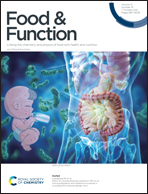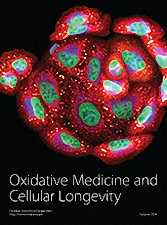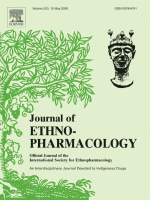Dang Gui
How to submit an article:
- Registered users can submit any published journal article that has a unique DOI (Digital Object Identifier) name or link to Research Hub.
- For example, you can paste the full DOI link:
https://doi.org/10.1109/5.771073or just the DOI name:10.1109/5.771073into the field above and click submit. - The person who is first to submit a valid article to Research Hub will forever be credited for it, and every article submission earns you +6 Research Points.
Also known as: Angelica Sinensis
Published research studies are articles that present the findings of original research that has undergone a peer-review process and has been made publicly available in scholarly journals, books or other media.

Traditional Chinese Medicine in the Treatment of Chronic Kidney Diseases: Theories, Applications, and Mechanisms
2022 Jul 18 Frontiers in Pharmacology Yunlai Wang, Ye Feng, Manman Li, Mo Yang, Gaoxiang Shi, Zihua Xuan, et al.
Review Article Huang Qi San Qi Dang Gui Qu Feng Tong Luo Recipe Dan Shen Zhen Wu Decoction Fu LingVarious traditional Chinese medicine treatment strategies could potentially provide an effective alternative in slowing the progression of Chronic Kidney Disease.

Medicine–food herb: Angelica sinensis, a potential therapeutic hope for Alzheimer's disease and related complications
2022 Jan Food & Function Long Y, Li D, Yu S, Shi A, Deng J, Wen J, et al.
The role of dietary supplement components in AS for AD intervention is summarized, including vitamin B12, folic acid, arginine, and oleic acid, which can improve the symptoms of AD. Besides, this review focuses on the safety and toxicity evaluation of AS, which provides a basis for its application. This review will provide further support for the research on AD and the application of medicine–food herb AS in a healthy lifestyle in the future.
Review Article Dang Gui
Ethnopharmacological Survey of Traditional Chinese Medicine Pharmacy Prescriptions for Dysmenorrhea
2021 Dec 21 Frontiers in Pharmacology Su KH, Su SY, Ko CY, Cheng YC, Huang SS, Chao J
The study concludes that Angelica sinensis (Dang Gui), Ligusticum chuanxiong Hort (Chuan Qiong), Rehmannia glutinosa Libosch (Di Huang), Paeonia lactiflora Pall (Bai Shao), Hedysarum polybotrys Hand.-Mazz (Hong Qi), Lycium chinense Mill (Gou Qi Zi), and Cinnamomum cassia (Gui Zhi) are the seven core medicinal materials frequently used in TCM prescriptions for dysmenorrhea, forming 58 combinations with 107 association rules. The study emphasizes the valuable knowledge on TCM pharmacy prescriptions for dysmenorrhea and suggests potential avenues for future pharmacological research and the development of naturally derived medications.
Network Pharmacology
Radix Astragali and Radix Angelicae Sinensis in the Treatment of Idiopathic Pulmonary Fibrosis: A Systematic Review and Meta-analysis
2020 Apr 30 Frontiers in Pharmacology Zhang Y, Gu L, Xia Q, Tian L, Qi J, Cao M
RA and RAS are effective and safe in the treatment of IPF, which is beneficial to pulmonary function and exercise tolerance of these patients.
Systematic Review Meta-Analysis Huang Qi Dang Gui
Is Danggui Safe to be Taken by Breast Cancer Patients?-A Skepticism Finally Answered by Comprehensive Preclinical Evidence
2019 Jun 25 Frontiers in Pharmacology Yue Grace Gar-Lee, Wong Lok-Sze, Leung Hoi-Wing, Gao Si, Tsang Julia Yuen-Shan, Lin Zhi-Xiu, et al.
Dang GuiWe showed that Angelica sinensis is not that stimulatory in breast cancer both in vitro and in vivo, though Angelica sinensis should still be used with caution in estrogen receptor-positive breast cancer patients.
Research insights are moderated by the Research Hub team and offer an at-a-glance overview of interesting research findings.

2022 Frontiers in Pharmacology
Various traditional Chinese medicine treatment strategies could potentially provide an effective alternative in slowing the progression of Chronic Kidney Disease.
Review Article Dan Shen Fu Ling Huang Qi Qu Feng Tong Luo Recipe San Qi
Traditional Chinese Medicine in the Treatment of Chronic Kidney Diseases: Theories, Applications, and Mechanisms
Yunlai Wang, Ye Feng, Manman Li, Mo Yang, Gaoxiang Shi, Zihua Xuan, et al.

2019 Frontiers in Pharmacology
We showed that Angelica sinensis is not that stimulatory in breast cancer both in vitro and in vivo, though Angelica sinensis should still be used with caution in estrogen receptor-positive breast cancer patients.
Is Danggui Safe to be Taken by Breast Cancer Patients?-A Skepticism Finally Answered by Comprehensive Preclinical Evidence
Yue Grace Gar-Lee, Wong Lok-Sze, Leung Hoi-Wing, Gao Si, Tsang Julia Yuen-Shan, Lin Zhi-Xiu, et al.

2017 Oxidative Medicine and Cellular Longevity
Angelica Sinensis polysaccharide treatment has been found to effectively alleviate anaemia of chronic disease in rats by inhibiting inflammatory pathways and mobilizing iron.
Experimental Study Anaemia Hepcidin
Acidic Polysaccharide from Angelica sinensis Reverses Anemia of Chronic Disease Involving the Suppression of Inflammatory Hepcidin and NF-κB Activation
Wang K, Wu J, Cheng F, Huang X, Zeng F, Zhang Y

2011 Journal of Ethnopharmacology
Angelica sinensis polysaccharide (ASP) efficiently stimulates erythropoietin secretion and suppresses the liver's hepcidin expression, potentially aiding in treatments of hepcidin-induced diseases.
Experimental Study Erythropoietin Hepcidin
Inhibitory effect of polysaccharides isolated from Angelica sinensis on hepcidin expression
Wang KP, Zeng F, Liu JY, Guo D, Zhang Y
Review Articles
Review articles summarise and critically evaluate the current state of research on a specific topic or field by synthesising multiple primary research studies.

Traditional Chinese Medicine in the Treatment of Chronic Kidney Diseases: Theories, Applications, and Mechanisms
2022 Jul 18 Frontiers in Pharmacology Yunlai Wang, Ye Feng, Manman Li, Mo Yang, Gaoxiang Shi, Zihua Xuan, et al.
Review Article Huang Qi San Qi Dang Gui Qu Feng Tong Luo Recipe Dan Shen Zhen Wu Decoction Fu LingVarious traditional Chinese medicine treatment strategies could potentially provide an effective alternative in slowing the progression of Chronic Kidney Disease.

Medicine–food herb: Angelica sinensis, a potential therapeutic hope for Alzheimer's disease and related complications
2022 Jan Food & Function Long Y, Li D, Yu S, Shi A, Deng J, Wen J, et al.
The role of dietary supplement components in AS for AD intervention is summarized, including vitamin B12, folic acid, arginine, and oleic acid, which can improve the symptoms of AD. Besides, this review focuses on the safety and toxicity evaluation of AS, which provides a basis for its application. This review will provide further support for the research on AD and the application of medicine–food herb AS in a healthy lifestyle in the future.
Review Article Dang Gui
Radix Astragali and Radix Angelicae Sinensis in the Treatment of Idiopathic Pulmonary Fibrosis: A Systematic Review and Meta-analysis
2020 Apr 30 Frontiers in Pharmacology Zhang Y, Gu L, Xia Q, Tian L, Qi J, Cao M
RA and RAS are effective and safe in the treatment of IPF, which is beneficial to pulmonary function and exercise tolerance of these patients.
Systematic Review Meta-Analysis Huang Qi Dang GuiClinical Trials
Clinical trials are research studies that involve people and are conducted to evaluate the safety and efficacy of new treatments or interventions, such as drugs, medical devices, or behavioural therapies.
Study Protocols
Published study protocols are detailed plans that outline the objectives, methodology, statistical analyses, and organisation of a research study that have been made publicly available for others to review and use as a reference.
Presentation Slides

Review Article
Various traditional Chinese medicine treatment strategies could potentially provide an effective alternative in slowing the progression of Chronic Kidney Disease.
Yunlai Wang, Ye Feng, Manman Li, Mo Yang, Gaoxiang Shi, Zihua Xuan, Dengke Yin, Fan Xu

We showed that Angelica sinensis is not that stimulatory in breast cancer both in vitro and in vivo, though Angelica sinensis should still be used with caution in estrogen receptor-positive breast cancer patients.
Yue Grace Gar-Lee, Wong Lok-Sze, Leung Hoi-Wing, Gao Si, Tsang Julia Yuen-Shan, Lin Zhi-Xiu, Law Bonita Ka-Bo, Tse Gary Man-Kit, Lau Clara Bik-San

Experimental Study
Angelica Sinensis polysaccharide treatment has been found to effectively alleviate anaemia of chronic disease in rats by inhibiting inflammatory pathways and mobilizing iron.
Wang K, Wu J, Cheng F, Huang X, Zeng F, Zhang Y

Experimental Study
Angelica sinensis polysaccharide (ASP) efficiently stimulates erythropoietin secretion and suppresses the liver's hepcidin expression, potentially aiding in treatments of hepcidin-induced diseases.
Wang KP, Zeng F, Liu JY, Guo D, Zhang Y
Executive Summary
Write an executive summary in the form of a blog article on the topic of "Research into Chinese medicine treatment for Dang Gui" summarising the research below and using language that can be easily understood by patients and avoiding medical jargon using a professional and caring tone of voice.
Write an executive summary in the form of a blog article on the topic of "Researched Chinese medicine treatments for Dang Gui" summarising the research below in an objective and easy to understand way, and using language that can be easily understood by patients. Group the article into Chinese medicine treatments first, followed by nutrition and other treatments. Avoid using medical jargon and use a professional and caring tone of voice.
Write me a concise but easy to understand executive summary on the topic of "Chinese medicine treatments for Dang Gui" based on the following research that I will give you. Your summary should be 2 paragraphs long in Australian English spelling and include references to the studies.
A Review Article published in 2022 in the journal Frontiers in Pharmacology found that Various traditional Chinese medicine treatment strategies could potentially provide an effective alternative in slowing the progression of Chronic Kidney Disease. The study explores the use of Traditional Chinese Medicine (TCM) and various Chinese materia medica (CMM) to manage Chronic Kidney Disease (CKD). The review delves deeper into the principles and treatment approaches of TCM in battling CKD, dictating that the disease's nature is deficient in the root and excessive in the branches, where deficiency and excess persist simultaneously throughout the condition. The main strategies employed by TCM in the treatment of CKD include invigorating Qi, tonifying kidneys, promoting blood circulation, removing stasis, eliminating heat and dampness, reducing turbidity, and controlling edema. The discussion highlights the effectiveness of several CMMs in treating CKD, which are undergirded by clinical evidence or experimental studies. Notably, it points out a correlation between the macroscopic view of TCM and the microscopic view of modern medicine. These TCM and CMM strategies are hailed for their multi-targeted and multi-functional characteristics, potentially providing an effective alternative treatment approach for CKD.
A published in 2019 in the journal Frontiers in Pharmacology found that We showed that Angelica sinensis is not that stimulatory in breast cancer both in vitro and in vivo, though Angelica sinensis should still be used with caution in estrogen receptor-positive breast cancer patients. The present findings provided further scientific evidences, which showed that the estrogenic herb AS are not that stimulatory in breast cancer both in vitro and in vivo, though it should still be used with caution particularly in ER-positive breast cancer patients. This is the first systematic pre-clinical study to illustrate the safety use of AS in breast cancer patients by providing varied levels of evidences.
A Experimental Study published in 2017 in the journal Oxidative Medicine and Cellular Longevity found that Angelica Sinensis polysaccharide treatment has been found to effectively alleviate anaemia of chronic disease in rats by inhibiting inflammatory pathways and mobilizing iron. The study utilized both HepG2 cells and rats suffering from Anemia of Chronic Disease (ACD) to assess the therapeutic efficacy of Polysaccharide. The cells and rats were administered the Polysaccharide, and the researchers observed its impact on two inflammatory pathways: the IL-6/STAT3 and BMP/SMAD. The Polysaccharide administration showed significant effects, inhibiting inflammatory hepcidin in both the cell sample and the rat population. Furthermore, in the rats, the introduction of the polysaccharide triggered an increase in ferroportin expression, which enabled iron to be transported from the liver and spleen, leading to increased serum iron levels. This also led to an elevation of serum EPO and a general relief from the anemia symptoms. Additionally, the treatment inhibited the NF-B p65 activation via the IB kinases-IB pathway, leading to a reduction in interleukin-6 and TNF- secretion - both of which are known to inhibit erythropoiesis. Hence, the study provides evidence for the potential use of polysaccharide as a treatment option for anemia of chronic disease.
A Experimental Study published in 2011 in the journal Journal of Ethnopharmacology found that Angelica sinensis polysaccharide (ASP) efficiently stimulates erythropoietin secretion and suppresses the liver's hepcidin expression, potentially aiding in treatments of hepcidin-induced diseases. In observing the effects of ASP, a substance derived from a plant used in traditional Chinese medicine, the researchers administered the substance daily to rats through intragastric methods for a period of 14 days. Apart from this, a group of positive control rats also received injections of recombinant human erythropoietin. The researchers then monitored the levels of erythropoietin and hepcidin in the serum at various times using an enzyme-linked immunosorbent assay. Additionally, the researchers used the Western blot method to examine the expression of six key signal proteins in the liver. The results revealed that ASP notably diminished the liver's expression of hepcidin, a factor known for negatively regulating the body's iron metabolism. This reduction was primarily facilitated through inhibiting the expression of specific liver proteins (STAT3/5 and SMAD4) and stimulating the secretion of erythropoietin. This stimulation led to further down-regulation of hepcidin, a process aided by reducing the liver's expression of other proteins (C/EBPα, SMAD4, and the phosphorylation process of STAT3/5). Hence, the research suggests ASP can effectively suppress hepcidin expression in normal rats.
Moderation Tools
Topic
Sign In
Users not signed in are limited to viewing the 5 most recent items of content.